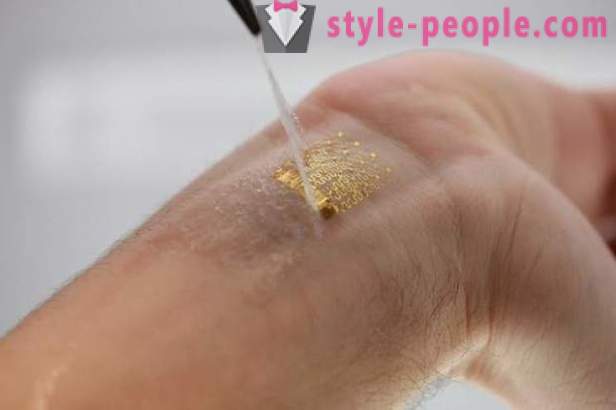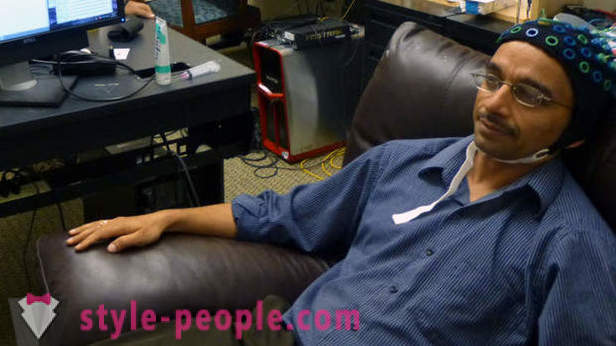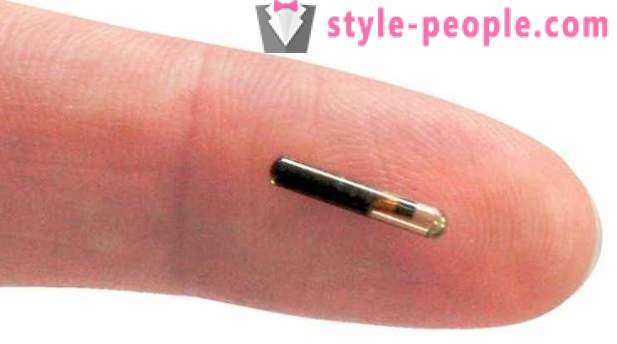10 new technologies, invading the private space
Technology now everywhere
Modern technology is increasingly interfering in our private space, and moreover, we are very attached to them. If modern man is at a distance from his favorite "smart devices", he was already beginning to experience some discomfort. But for better or worse, and the developers are looking at our relationship, and say, "Hmm, and yet we can strengthen it"!
1. Smart glasses that transform foreign text

NTT Docomo (Japan) introduced the glasses allows the owner to read and translate foreign texts for five seconds. This device is somewhat similar to the classic "universal translator" of science fiction movies, but only for the eyes. According to the manufacturer, points are used for special character recognition technology, and are designed primarily for users who frequently travel abroad. After the user has reviewed the text in a foreign language, glasses represent the primary translation workpiece, which will help to understand the text. In addition, these glasses can be used to turn any flat surface into a touch screen, and manipulated on this screen different virtual images, which are visible to the user. But these points there is a slightly scary face: they can show the contact details of those to whom the user is looking. So with this device to persecute people will be much more convenient (provided that such pursuits are your favorite hobbies).
2. Eye tracking the level of blood sugar

After Google Glass glasses have been released, they immediately did not like the traffic police and federal agents. However, Google still does not abandon its attempts to dominate in this area. But now she is trying to do it on a more altruistic basis, via the issuance of new contact lenses. These lenses are designed for patients with diabetes, and are designed to deliver these people from the inconvenience associated with the measurement of blood sugar levels. Diabetics there is no need to stick the needles in the body, and to be afraid of doing things, it is harmless to non-diabetics, but deadly for patients. For example, eat donuts. Google's lens eliminates all these disadvantages by means of measuring the level of blood sugar through tears, and change color depending on the recorded level of sugar. In general, check the sugar will now be as easy to get as a mirror and look at the color of his eyes. One can only hope that in the course of this process will not be televised advertisements from Google.
3 bracelets on her wrist, warming or cooling of human

Remember those times when you want to on your wrist you had installed any device that can warm up, or vice versa, you cool? If so, for it is better to apply to MIT (Massachusetts Institute of Technology). That there are three student created a device that monitors the outdoor air temperature and human body temperature, and responsive to the temperature accordingly. According to one of the creators of the device, it is constantly deceiving the human body, for example, causes the body to think that now the cold. As a result of the body to acclimate to the environment, and changes in temperature.
4. Bra, send tweets

But microblogging significant simplification of the process for the ladies: a specially designed bra that sends a tweet at a time when it is removed. One of Nestle's firm fitness branches teamed up with the Twitter service to create a special bra, breast cancer warning.
Mary wore a bra Bakodimu, "Greek Oprah," and he passed on messages from her mobile device to a remote server, which, in turn, publish new tweets in the social network. And in the tweets was a reminder to all women often check themselves for breast cancer as an independent verification of a lot cheaper than the regular passage of mammography, and much better than a happy ignorance. Although in fact it was, of course, merely altruistic publicity stunt.
5. Tattoo, measuring body temperature

The most common tattoos are a sort of symbol of rebellion and reckless youth. However, this tattoo is not anything like that. A team of researchers from the US, China and Singapore has developed an extremely thin electronic record capable of adhering to the skin as well as a temporary tattoo. Record can accurately measure the temperature of the one who wears it, and fixes the extension or on the contrary, constriction of blood vessels. In addition, it can display the status of the heart, brain and other vital organs. The main drawback of this "tattoo" is that it requires an external power source, such as batteries. Although the researchers are currently working hard to make the "tattoo" to work on bioenergy.
6. The fusion of the human mind

Yes, you read that right after reading the headline. There's really meant a successful example of how one person controlling another person's brain is only with the help of thought. Well, even with the help of electrodes. During the experiment, conducted in Washington State, one professor was able to control the actions of his colleague, who is at the other end of the campus. Professor Rajesh Rao and his colleague Andrea Stocco put special elekroentsefalograficheskie helmets, and sat on the opposite, and the most distant one from the other side of campus. Rao imagined that he was playing a computer game, he represented that moves his right hand, firing a gun. His helmet took the signal and send it to the helmet Stocco, whose right hand immediately began to reflexively move, and tried to press the "space" key on a computer keyboard, which was in front of him. Undoubtedly, these studies will be expanded, and in the future they may be used to program the most complex devices in the near future.
7. The false memories implanted in mice

Sometimes our memories are about as reliable as a sieve, which is used for water storage. By using special optical fibers, the research team was able to manipulate the mice, causing them to believe that a safe space in front of them is actually dangerous, instilling mice bad memories about this place. Researchers mice simply placed in a safe zone, and then used a bright flash of light in order to start the process of memory formation. Then they moved the mouse to another area, and once again turn on the flash, but this time all of the mice with the flash received mild electric shock. When the animals have moved back into the safe zone, they started to show signs of fear, simply because their brain is directly associated security zone with the pain from the electric shock. So why should this matter? Human biology has something in common with the biology of mice. Our brains, like the mouse brain creates memories, forming chains of cells that capture important moments for us, and which are interconnected by means of neurons. If scientists could figure out how to manage these neurons in people, it would already have appeared surgery to remove the traumatic memories, and the implantation of good memories. In addition, through such operations could treat amnesia and schizophrenia.
8. The implants for drug delivery

It is well known that there are people with a variety of diseases that require daily intake of various drugs. And yet we know that the daily intake of drugs is far from always pleasant, and often accompanied by pain in the "rear facade". In order to somehow alleviate the plight of the patients, the cause took the team from the University of Toronto, working in conjunction with experts from Harvard. They were able to create multiple implants made on the basis of a special polymer hydrogel, and is not rejected by the human body tissues. These hydrogel implants contain special cells that respond to light. Influencing the blue light implants, scientists were able to simulate the introduction of insulin in the body. This test was conducted on mice, so that the implants still need improvement in order to be further used in the human body.
9. The ads triggered emotions

Have you ever felt that the ads become too intrusive? Such as advertising that paid clinic, which ran out in front of you, you just wade watery eyes from lack of sleep? Or the announcement of a new grocery store, which appeared just at the moment when you were explaining to his friend on the network, you need to eat better? There is a new technology, working in sync with your computer's webcam, and scanning the face of a person looking at the screen at the moment. It involved face detection and recognition system of human emotions. Using your webcam, and the information received from the two above-mentioned systems, the program can determine your current mood. And advertisements will be aired, taking into account your mood. Representatives of big business and international trade networks have already purchased this software to manipulate potential buyers, forcing them to decide to purchase a particular product or service. Most of the time people keep emotions under control, so that access to the emotions is the key to sales. So it is possible that soon we will have to get used to read news feeds, wearing a mask.
10. The bra with sensors controlling your food

The fight against obesity is a lucrative market, and it sometimes leads to very strange technologies. The Microsoft Research recently created a special bra, which can protect you from overeating combined with a single application for a smartphone. It works with the help of a whole pile of sensors embedded in the fabric and measuring the level of cardiac activity by women. As you know, people eat more often during times of stress. Sensors measuring the heart rate, respiratory rate, body temperature and speed of movement, determine the level of human stress. Through several such measurements on a daily basis, your bra will eventually be able to determine exactly when you start to get nervous too, and this, in turn, helps regulate food intake.













































